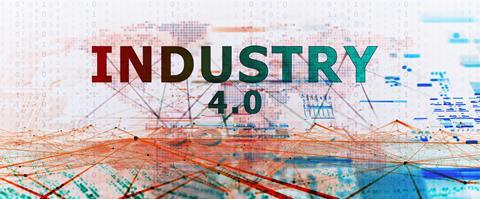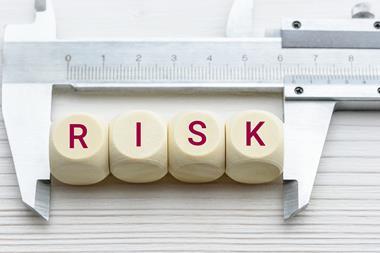Organisational risk frameworks aspire to help their organisations become intelligently responsive to the highly disruptive forces which emerge out of complex working systems, but what does this mean for risk managers? Risk specialist, Warren Black explains.

The re-birth of Resilience as an Organisational Risk Management Strategy
Resilience as an organisational risk management concept is not new. It has been around for a while, however, the premise has to some extent been misrepresented. Historical views of resilience have overwhelmingly supported the notion that it is the ability of an entity to return to a business-as-usual state (BAU) after experiencing some form of disruptive event that qualifies it as being resilient.
Case-in-point: The engineering definition of resilience is the ability of a structure to return to its baseline state after experiencing a stressful force. Presumably, because of this particular definition, many institutions view resilience as the ability to “bounce back” and such supporting terms as operational normalisation, disaster recovery and business continuity are commonly used to describe organisational resilience.
The problem with this particular view of resilience is that it ignores the possibility that perhaps the reason the disruptive event was allowed to manifest in the first place was because the organisation’s BAU was actually flawed, vulnerable or obsolete? In such a case, bouncing back to BAU isn’t really a resilient solution, as there is something obviously flawed about returning to a state of pre-existing vulnerability. Clearly, this particular definition of resilience does not suit a world of perpetual disruption, and so we must now look for a more contextually appropriate definition: Enter the complexity sciences.
Resilience is normally assessed by how well a body resists shocks to stay the same; what should rather be assessed is how much better the body gets after the shock - Nassim Taleb, AntiFragile
The Complex Systems’ view of Resilience
Resilience actually has its roots in the study of natural complex systems such as biological eco-systems, reproductive systems, immune systems, animal food chains, rainforests. Such natural complex systems have been able to endure billions of years of planet shaping, disruptive phenomena in the form of asteroid strikes, tectonic shifts, global freezing, global warming, floods, droughts, pandemics, natural selection and the like. Clearly, the world’s natural complex systems are highly resilient entities and modern-day organisations can learn much from how these systems have secured their Resilience over the millennia.
So what makes these natural complex systems so highly Resilient? In a nutshell, it is their ability to respond intelligently to emerging changes in their surrounding circumstances. In the natural systems universe, Resilience is all about the ability of a system to recognise, respond and adjust to the emerging phenomena which surround them. Think about it, a rainforest is not a static entity, it is a highly intelligent system which is continually interpreting, responding and adapting to the continuous environmental changes which are presented by the shifting seasons, droughts, floods, infestations, overpopulation and many other emergent phenomena. The Amazon rain forests are 55 million years old and cover an area of about 7 million square kilometers - such mass, long-term survival does not come without an intelligence-driven sense of responsiveness.
Herein lies the critical learning for modern organisations, the complexity sciences do not recognise Resilience as being the ability to “bounce back” but rather the ability to “bounce forward”. Natural complex systems are not Resilient because of their ability to retain their original state, but rather because they have an intelligence-driven ability to evolve to a new state when a new state is indeed required. This is the original and truest goal of Resilience and it is the goal that modern risk management must now try to emulate if organisations are to survive the Fourth Industrial Revolution.
To truly understand Organisational Resilience we must look at an Organisation as a system, so that we may apply systemic rules to achieving system-wide Resilience - Roland Kupers, Turbulence
Evolving organisations from Robust towards Resilient
The Fourth Industrial Revolution now demands that organisational risk frameworks aspire to help their organisations become intelligently responsive to the highly disruptive forces which emerge out of complex working systems. But how? Again, organisations should look towards the complexity sciences, where scientists have been studying highly resilient natural systems for centuries and in turn have noticed at least three common characteristics enabling such Resilience;
Characteristic #1 - highly resilient natural systems are extremely attuned to emerging changes across their entire operating network. That is, natural systems consist of multiple interconnected contributing agents and supporting systems which all collectively monitor for signs of systemic change and in turn, respond as a fully integrated collaborative system. Think of a large flock of small birds swooping low across a field, when one bird spots an obstruction and turns suddenly to the left, the entire flock turns with it in real time - such as the speed of their observation, communication & response. The ability to respond intelligently to emergent disruptors on a system-wide level is critical to resilience.
Characteristic #2 - highly resilient natural systems have built-in ’cleaning agents’ which continually seek out and address systemic vulnerabilities. Consider the role of antibodies in the human immune system, or the crocodile bird, the dung beetle and even the remora fish. All of these are natural cleaning agents, whose purpose is to remove the dirt, weeds and infection which might weaken their particular host system. Complex systems are continually transitioning, thus by pro-actively seeking out and removing systemic vulnerabilities, the entire system can retain its resilience.
Characteristic #3 - highly resilient natural systems have multiple redundancies in play which allow the master system to decouple from any singular contributing agent or supporting system when disrupted. Consider when a bird grabs a gecko by the tail, the tail simply falls off thereby allowing the lizard to escape. Equally, most immune systems will attempt to reroute vital body flows away from organs which are infected by a virus. By de-coupling or re-routing critical systems from a disrupted system, natural complex systems are able to retain their resilience.
These three resilience characteristics offer an interesting set of real-world learnings as they suggest that resilience can be achieved within modern organisations by (i) improving their environmental scanning (& responses) to emergent phenomena, (ii) improving their ability to recognise and address internal vulnerabilities and (iii) improving their ability to de-couple at will from critical business relationships.
Some theorists are so enthused by these three resilience characteristics that have even gone so far as to suggest that there is a demonstrable mathematical relationship between them. Namely: disruption = [emergence + vulnerability] x dependence
The proposed relationship equation attempts to demonstrate how disruption comes to be. It argues that total system-wide disruption can only occur when an emergent phenomenon (aka an environmental change) is introduced to a systemic vulnerability (aka an internal weakness) and is then able to spread virally throughout the host system’s inter-dependent relationships. Comparable to when a fatal virus infects the immune system of a human body and then spreads virally to create total, system-wide disruption (death).
Now consider the countless modern organisations which have experienced total system-wide disruption in recent years. In almost all cases, emergent industry phenomena (new technologies, products & services) were able to leverage a specific vulnerability in the organisation’s business model and because of the organisation’s over-dependence on that model the organisation was absolutely disrupted. Isn’t that exactly what happened to blockbuster video, Kodak film and Blackberry phones?
Keeping the above in mind, the disruption equation has a noticeable potential to help modern organisations better understand how to achieve resilience in a scientifically valid manner. By neutralising any one of the three contributing components of the disruption equation to a zero value, system-wide disruption can be avoided as any zero contributing value will always equate to a zero total sum value. In turn, any organisation which is able to leverage the specific antidotal characteristics of the disruption equation should, in theory, achieve a comparable state of resilience as those of highly resilient natural systems.
This is part two of our three-part series. To read part one, click here: https://www.strategic-risk-global.com/part-one-building-resilience-in-the-fourth-industrial-revolution/1427930.article





















No comments yet